Attached files
| file | filename |
|---|---|
| EX-99.1 - EX-99.1 - ACI WORLDWIDE, INC. | c64360exv99w1.htm |
| 8-K - FORM 8-K - ACI WORLDWIDE, INC. | c64360e8vk.htm |
Exhibit 99.2
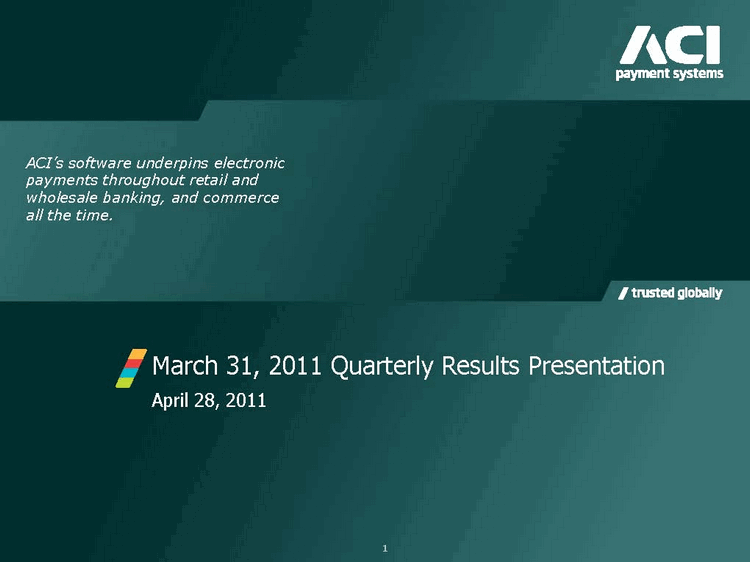
| April 28, 2011 March 31, 2011 Quarterly Results Presentation 1 ACI's software underpins electronic payments throughout retail and wholesale banking, and commerce all the time. |
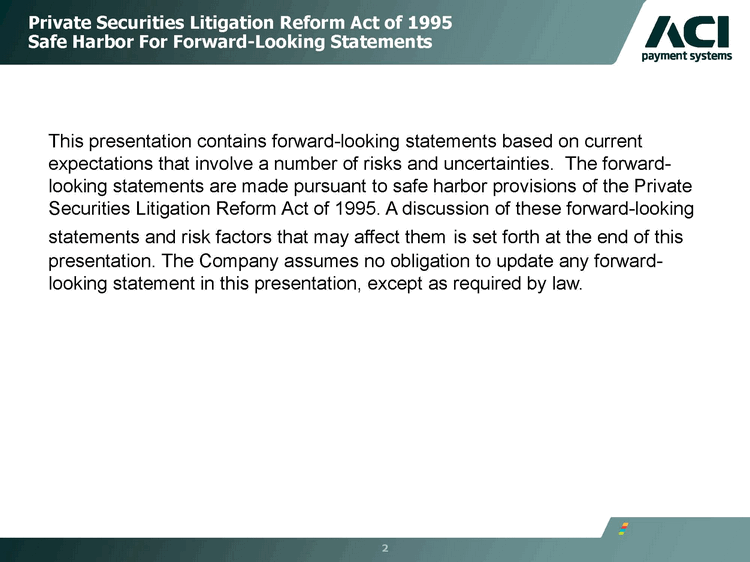
| 2 This presentation contains forward-looking statements based on current expectations that involve a number of risks and uncertainties. The forward- looking statements are made pursuant to safe harbor provisions of the Private Securities Litigation Reform Act of 1995. A discussion of these forward-looking statements and risk factors that may affect them is set forth at the end of this presentation. The Company assumes no obligation to update any forward- looking statement in this presentation, except as required by law. Private Securities Litigation Reform Act of 1995 Safe Harbor For Forward-Looking Statements |
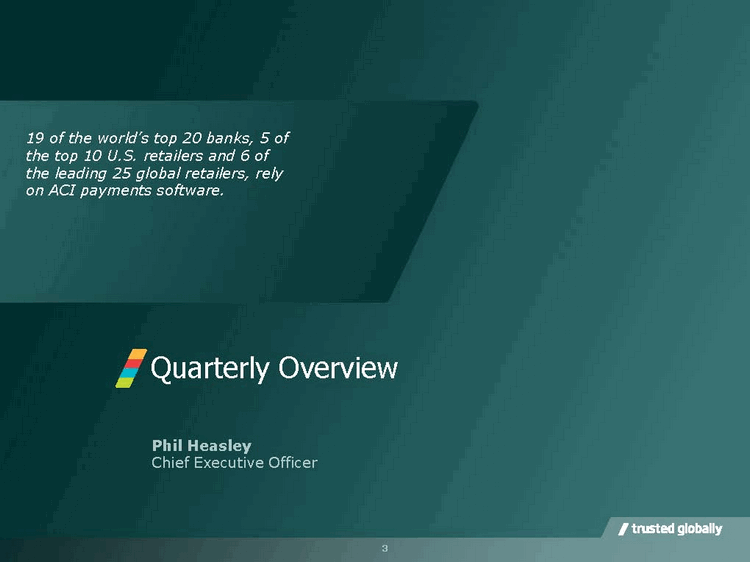
| Quarterly Overview 19 of the world's top 20 banks, 5 of the top 10 U.S. retailers and 6 of the leading 25 global retailers, rely on ACI payments software. Phil Heasley Chief Executive Officer |
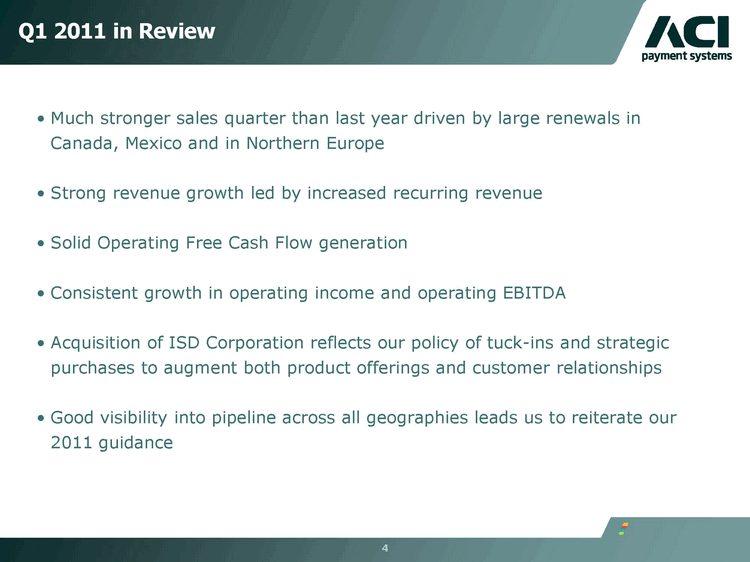
| 4 Q1 2011 in Review Much stronger sales quarter than last year driven by large renewals in Canada, Mexico and in Northern Europe Strong revenue growth led by increased recurring revenue Solid Operating Free Cash Flow generation Consistent growth in operating income and operating EBITDA Acquisition of ISD Corporation reflects our policy of tuck-ins and strategic purchases to augment both product offerings and customer relationships Good visibility into pipeline across all geographies leads us to reiterate our 2011 guidance |
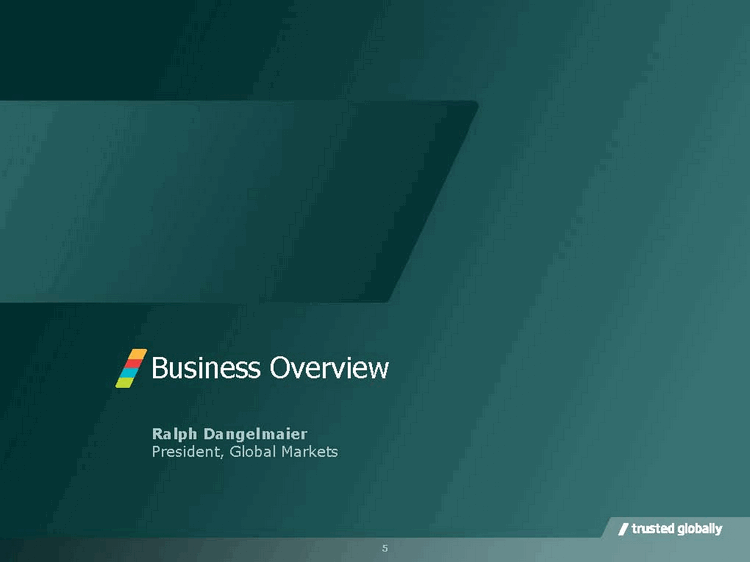
| Business Overview Ralph Dangelmaier President, Global Markets |
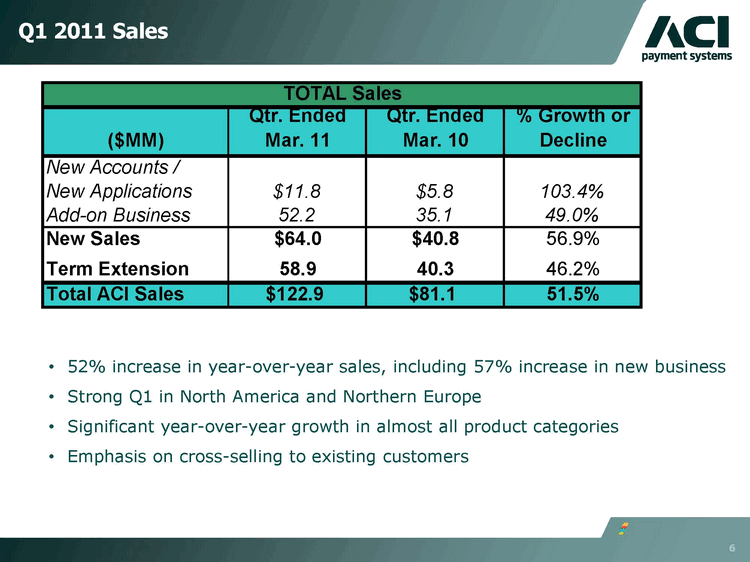
| 52% increase in year-over-year sales, including 57% increase in new business Strong Q1 in North America and Northern Europe Significant year-over-year growth in almost all product categories Emphasis on cross-selling to existing customers 6 Q1 2011 Sales |
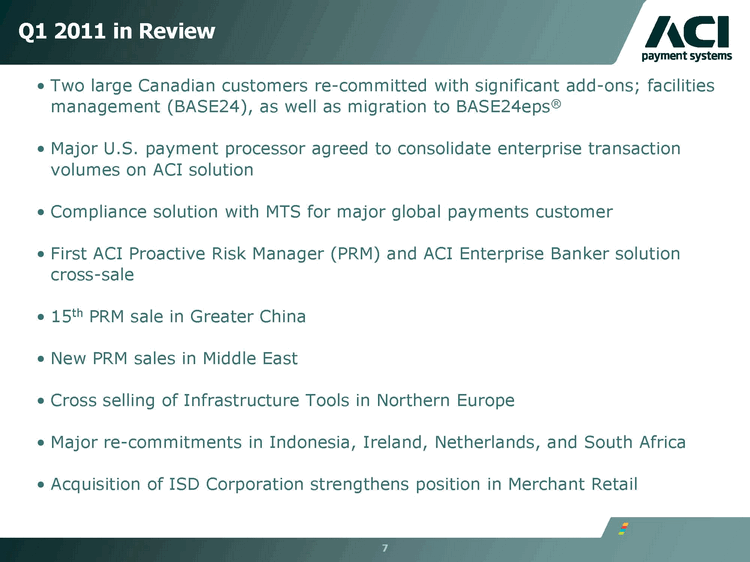
| 7 Q1 2011 in Review Two large Canadian customers re-committed with significant add-ons; facilities management (BASE24), as well as migration to BASE24eps(r) Major U.S. payment processor agreed to consolidate enterprise transaction volumes on ACI solution Compliance solution with MTS for major global payments customer First ACI Proactive Risk Manager (PRM) and ACI Enterprise Banker solution cross-sale 15th PRM sale in Greater China New PRM sales in Middle East Cross selling of Infrastructure Tools in Northern Europe Major re-commitments in Indonesia, Ireland, Netherlands, and South Africa Acquisition of ISD Corporation strengthens position in Merchant Retail |

| 8 Overall Market Conditions Americas Tremendous cost pressures drive continued investment Continuing need for compliance EMEA Developed Markets Economic pressures drive interest in creating infrastructural efficiencies Developing Markets Economic growth and interest in leap-frogging traditional payment paradigms (going to mobile, pre-paid, chip, etc.) Asia/Pacific Investment in payments infrastructure Continuing growth in electronic transaction volumes drive investment |
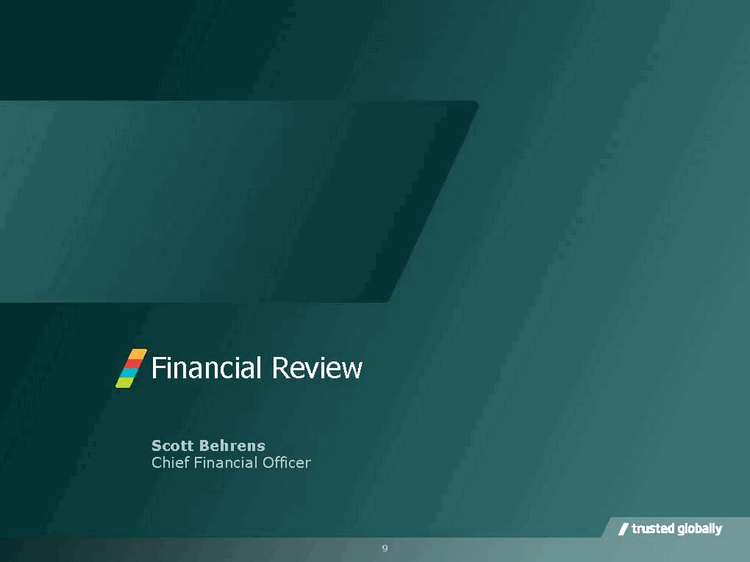
| Financial Review Scott Behrens Chief Financial Officer |
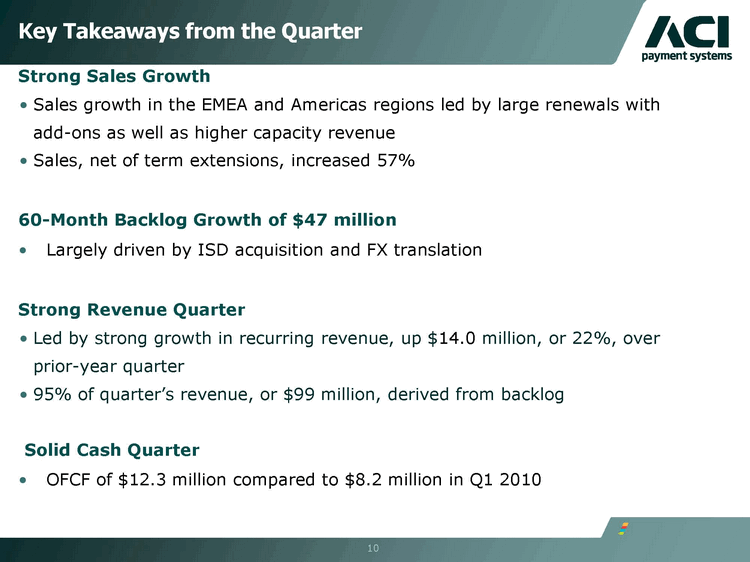
| Key Takeaways from the Quarter Strong Sales Growth Sales growth in the EMEA and Americas regions led by large renewals with add-ons as well as higher capacity revenue Sales, net of term extensions, increased 57% 60-Month Backlog Growth of $47 million Largely driven by ISD acquisition and FX translation Strong Revenue Quarter Led by strong growth in recurring revenue, up $14.0 million, or 22%, over prior-year quarter 95% of quarter's revenue, or $99 million, derived from backlog Solid Cash Quarter OFCF of $12.3 million compared to $8.2 million in Q1 2010 10 |
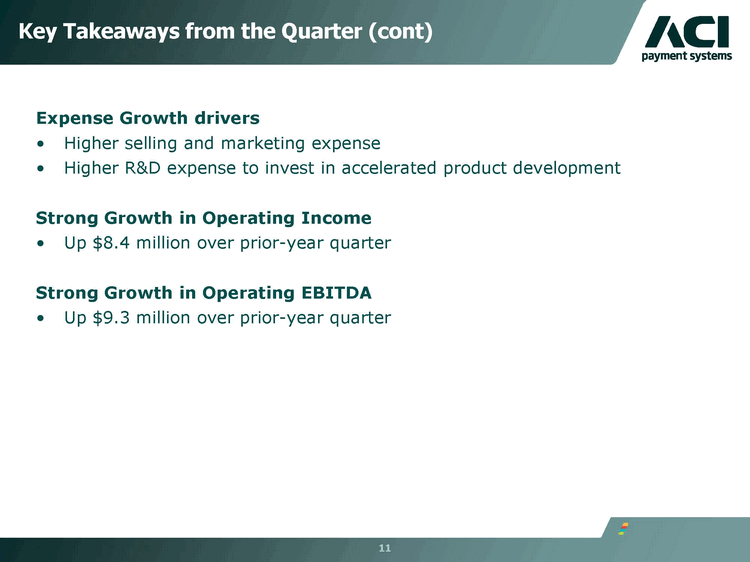
| 11 Key Takeaways from the Quarter (cont) Expense Growth drivers Higher selling and marketing expense Higher R&D expense to invest in accelerated product development Strong Growth in Operating Income Up $8.4 million over prior-year quarter Strong Growth in Operating EBITDA Up $9.3 million over prior-year quarter |
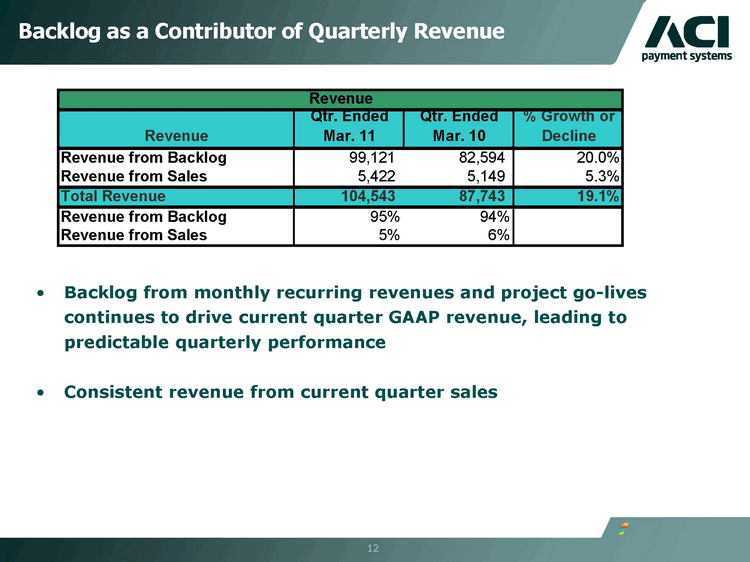
| Backlog as a Contributor of Quarterly Revenue Backlog from monthly recurring revenues and project go-lives continues to drive current quarter GAAP revenue, leading to predictable quarterly performance Consistent revenue from current quarter sales 12 |
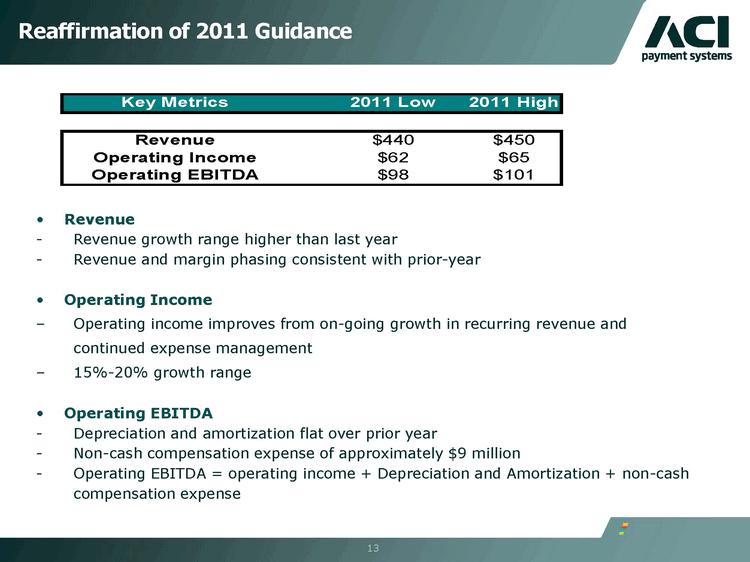
| Reaffirmation of 2011 Guidance 13 Revenue Revenue growth range higher than last year Revenue and margin phasing consistent with prior-year Operating Income Operating income improves from on-going growth in recurring revenue and continued expense management 15%-20% growth range Operating EBITDA Depreciation and amortization flat over prior year Non-cash compensation expense of approximately $9 million Operating EBITDA = operating income + Depreciation and Amortization + non-cash compensation expense |
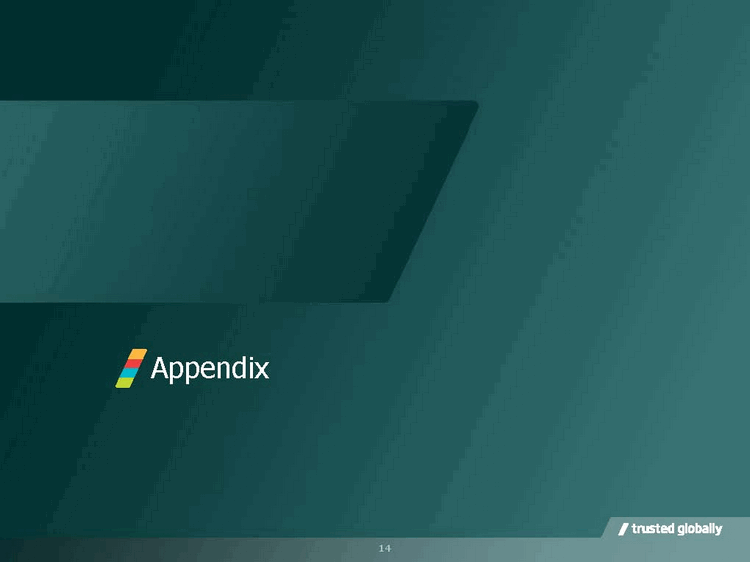
| Appendix |
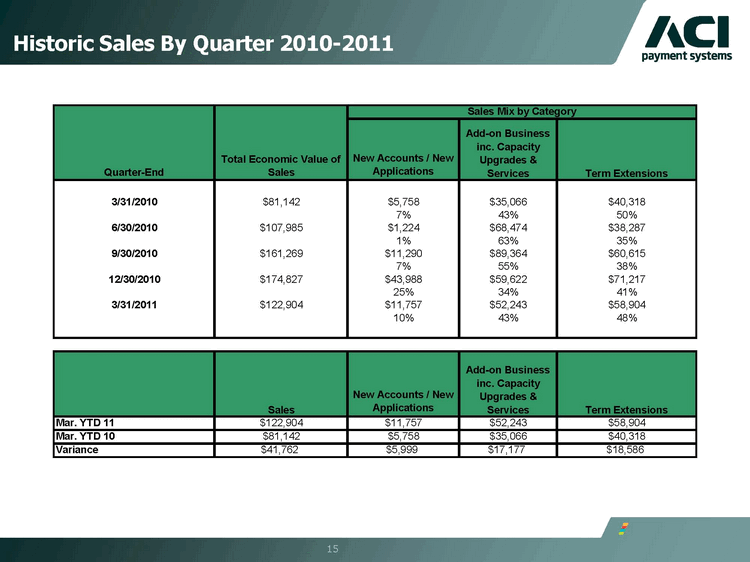
| 15 Historic Sales By Quarter 2010-2011 |
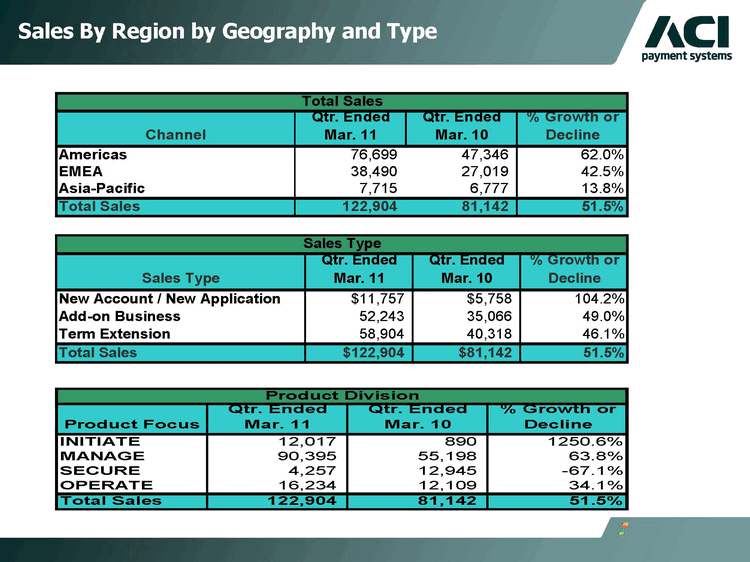
| Sales By Region by Geography and Type |
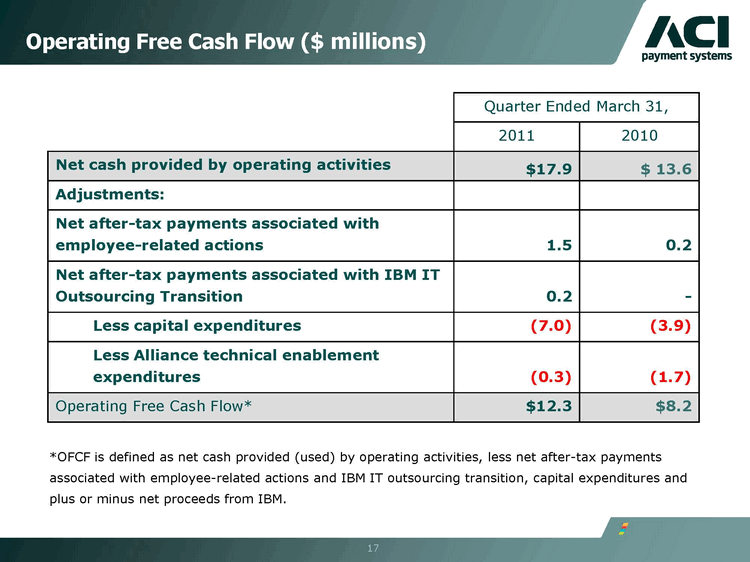
| Operating Free Cash Flow ($ millions) 17 17 *OFCF is defined as net cash provided (used) by operating activities, less net after-tax payments associated with employee-related actions and IBM IT outsourcing transition, capital expenditures and plus or minus net proceeds from IBM. |
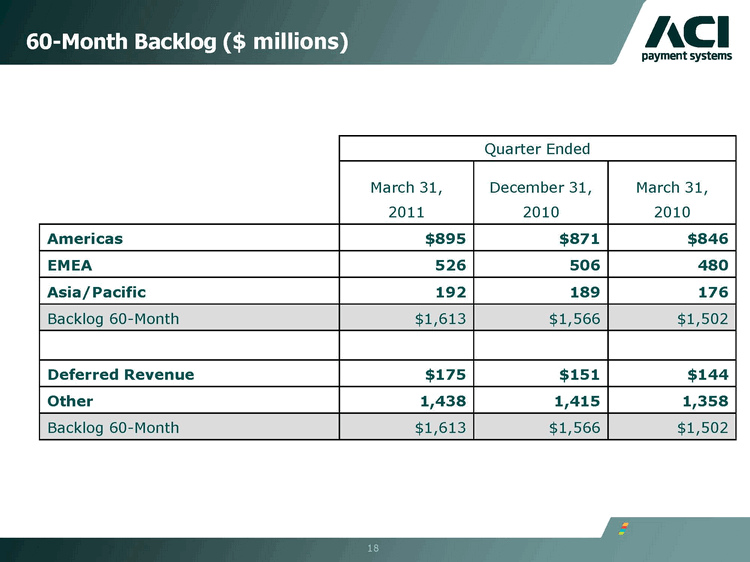
| 60-Month Backlog ($ millions) 18 18 |
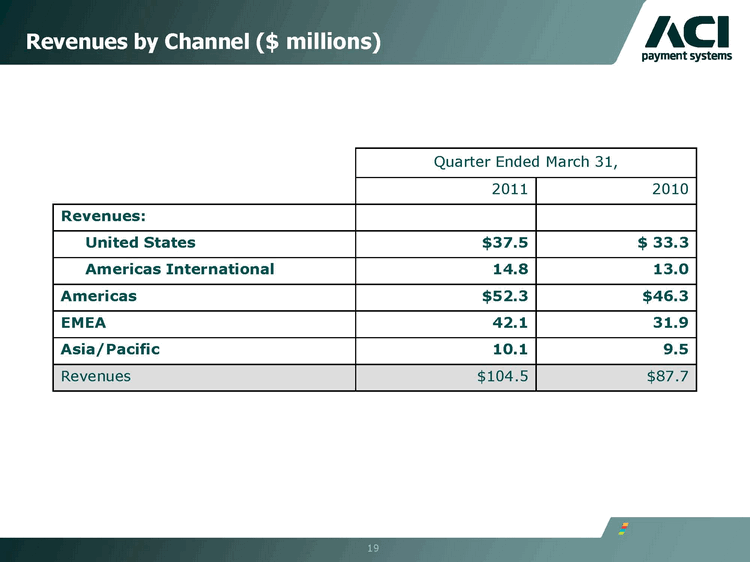
| Revenues by Channel ($ millions) 19 19 |

| Monthly Recurring Revenue ($ millions) 20 20 |
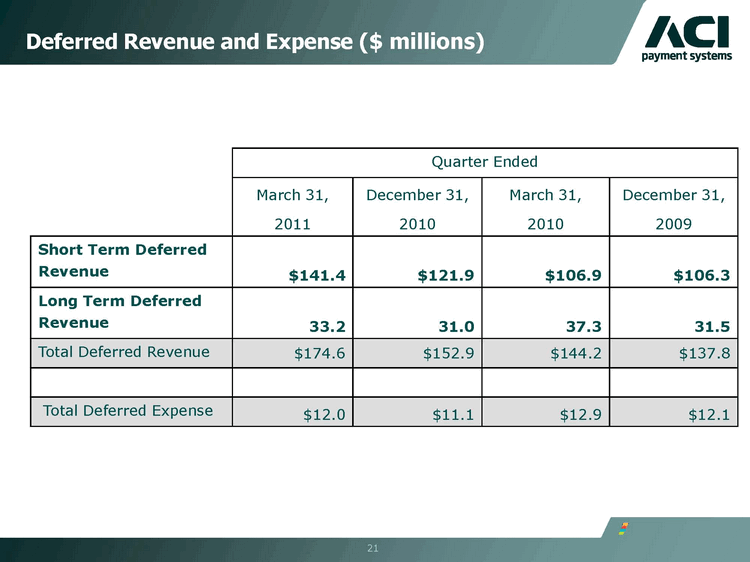
| Deferred Revenue and Expense ($ millions) 21 21 |
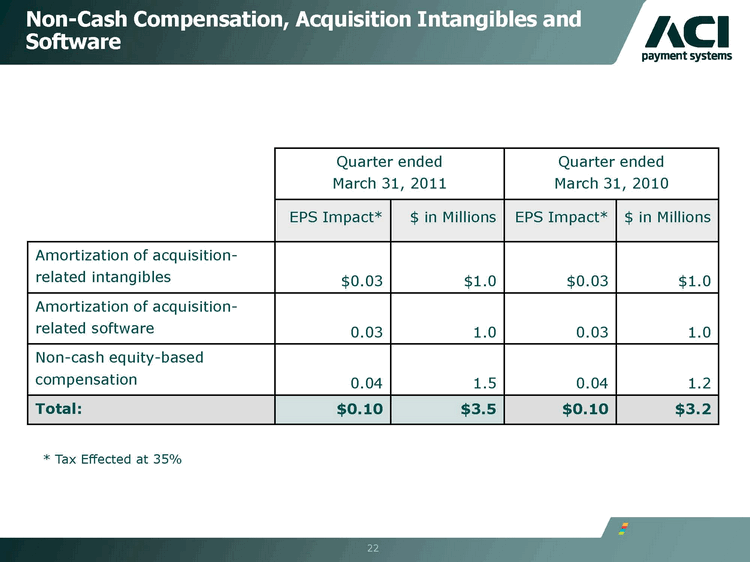
| Non-Cash Compensation, Acquisition Intangibles and Software 22 22 * Tax Effected at 35% |
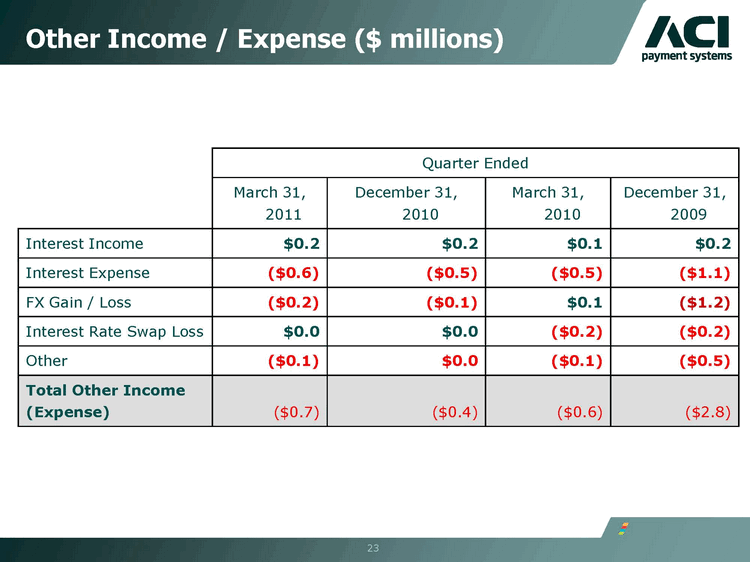
| Other Income / Expense ($ millions) 23 23 |
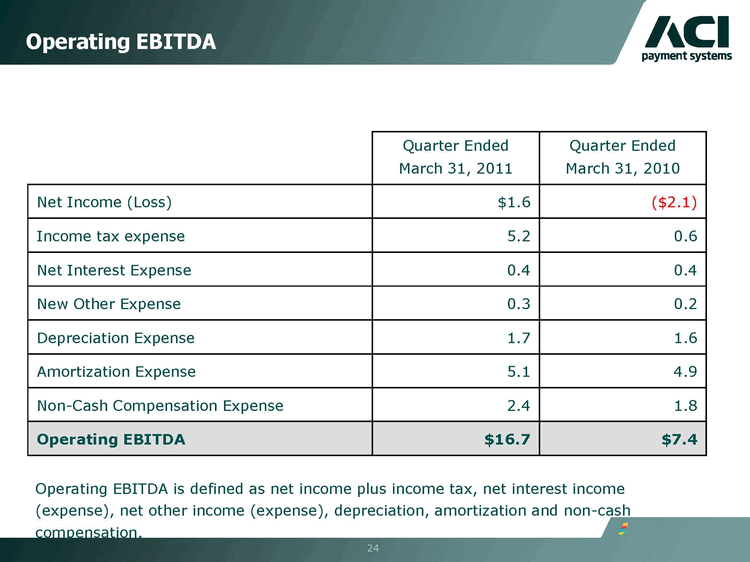
| Operating EBITDA Operating EBITDA 24 Operating EBITDA is defined as net income plus income tax, net interest income (expense), net other income (expense), depreciation, amortization and non-cash compensation. |
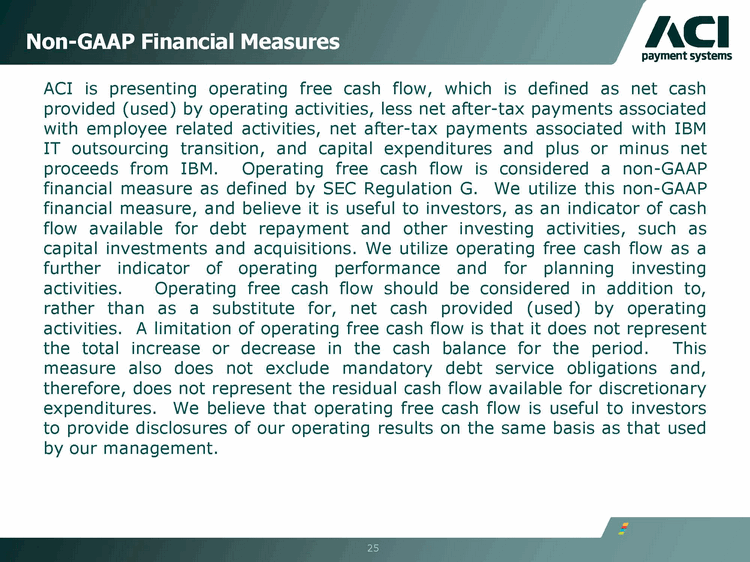
| Non-GAAP Financial Measures ACI is presenting operating free cash flow, which is defined as net cash provided (used) by operating activities, less net after-tax payments associated with employee related activities, net after-tax payments associated with IBM IT outsourcing transition, and capital expenditures and plus or minus net proceeds from IBM. Operating free cash flow is considered a non-GAAP financial measure as defined by SEC Regulation G. We utilize this non-GAAP financial measure, and believe it is useful to investors, as an indicator of cash flow available for debt repayment and other investing activities, such as capital investments and acquisitions. We utilize operating free cash flow as a further indicator of operating performance and for planning investing activities. Operating free cash flow should be considered in addition to, rather than as a substitute for, net cash provided (used) by operating activities. A limitation of operating free cash flow is that it does not represent the total increase or decrease in the cash balance for the period. This measure also does not exclude mandatory debt service obligations and, therefore, does not represent the residual cash flow available for discretionary expenditures. We believe that operating free cash flow is useful to investors to provide disclosures of our operating results on the same basis as that used by our management. 25 |
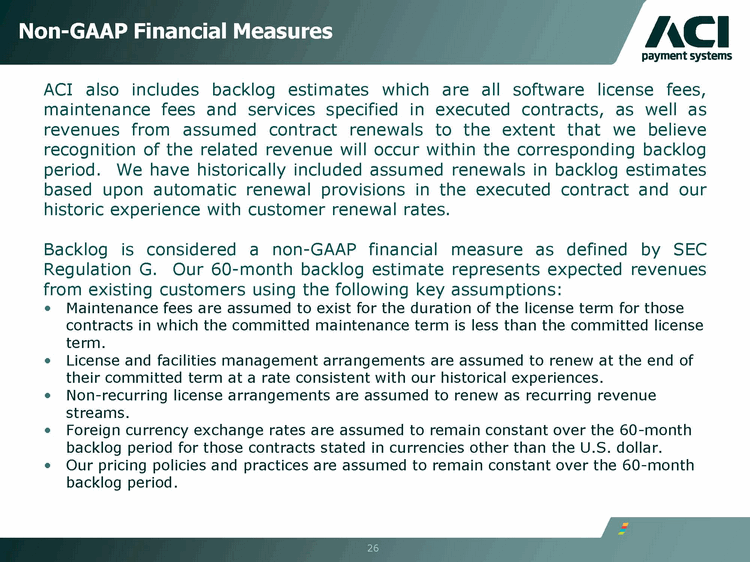
| Non-GAAP Financial Measures ACI also includes backlog estimates which are all software license fees, maintenance fees and services specified in executed contracts, as well as revenues from assumed contract renewals to the extent that we believe recognition of the related revenue will occur within the corresponding backlog period. We have historically included assumed renewals in backlog estimates based upon automatic renewal provisions in the executed contract and our historic experience with customer renewal rates. Backlog is considered a non-GAAP financial measure as defined by SEC Regulation G. Our 60-month backlog estimate represents expected revenues from existing customers using the following key assumptions: Maintenance fees are assumed to exist for the duration of the license term for those contracts in which the committed maintenance term is less than the committed license term. License and facilities management arrangements are assumed to renew at the end of their committed term at a rate consistent with our historical experiences. Non-recurring license arrangements are assumed to renew as recurring revenue streams. Foreign currency exchange rates are assumed to remain constant over the 60-month backlog period for those contracts stated in currencies other than the U.S. dollar. Our pricing policies and practices are assumed to remain constant over the 60-month backlog period. 26 |
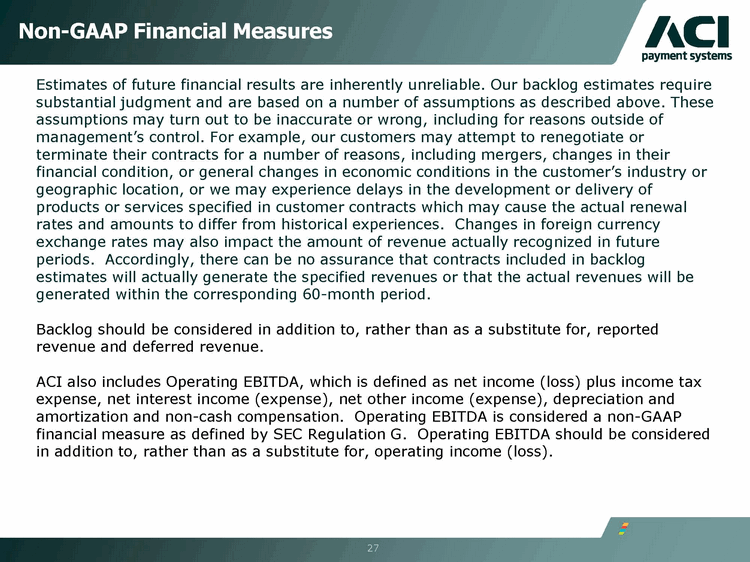
| Non-GAAP Financial Measures Estimates of future financial results are inherently unreliable. Our backlog estimates require substantial judgment and are based on a number of assumptions as described above. These assumptions may turn out to be inaccurate or wrong, including for reasons outside of management's control. For example, our customers may attempt to renegotiate or terminate their contracts for a number of reasons, including mergers, changes in their financial condition, or general changes in economic conditions in the customer's industry or geographic location, or we may experience delays in the development or delivery of products or services specified in customer contracts which may cause the actual renewal rates and amounts to differ from historical experiences. Changes in foreign currency exchange rates may also impact the amount of revenue actually recognized in future periods. Accordingly, there can be no assurance that contracts included in backlog estimates will actually generate the specified revenues or that the actual revenues will be generated within the corresponding 60-month period. Backlog should be considered in addition to, rather than as a substitute for, reported revenue and deferred revenue. ACI also includes Operating EBITDA, which is defined as net income (loss) plus income tax expense, net interest income (expense), net other income (expense), depreciation and amortization and non-cash compensation. Operating EBITDA is considered a non-GAAP financial measure as defined by SEC Regulation G. Operating EBITDA should be considered in addition to, rather than as a substitute for, operating income (loss). 27 |
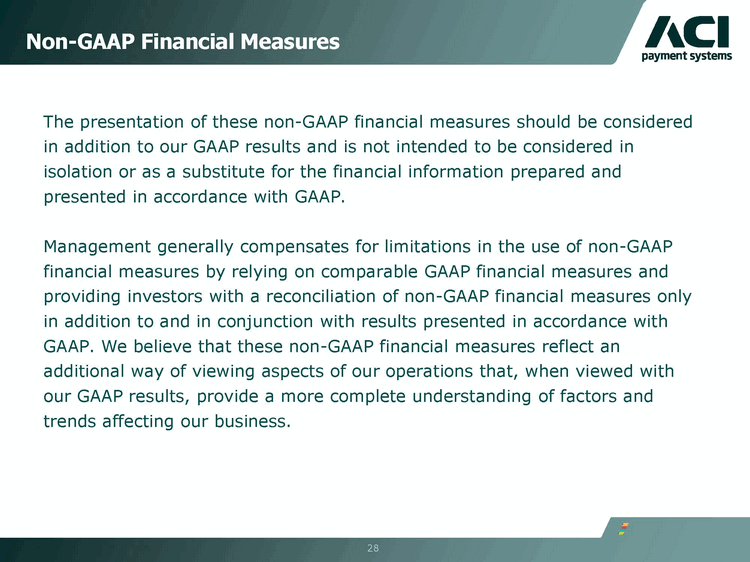
| Non-GAAP Financial Measures The presentation of these non-GAAP financial measures should be considered in addition to our GAAP results and is not intended to be considered in isolation or as a substitute for the financial information prepared and presented in accordance with GAAP. Management generally compensates for limitations in the use of non-GAAP financial measures by relying on comparable GAAP financial measures and providing investors with a reconciliation of non-GAAP financial measures only in addition to and in conjunction with results presented in accordance with GAAP. We believe that these non-GAAP financial measures reflect an additional way of viewing aspects of our operations that, when viewed with our GAAP results, provide a more complete understanding of factors and trends affecting our business. 28 |
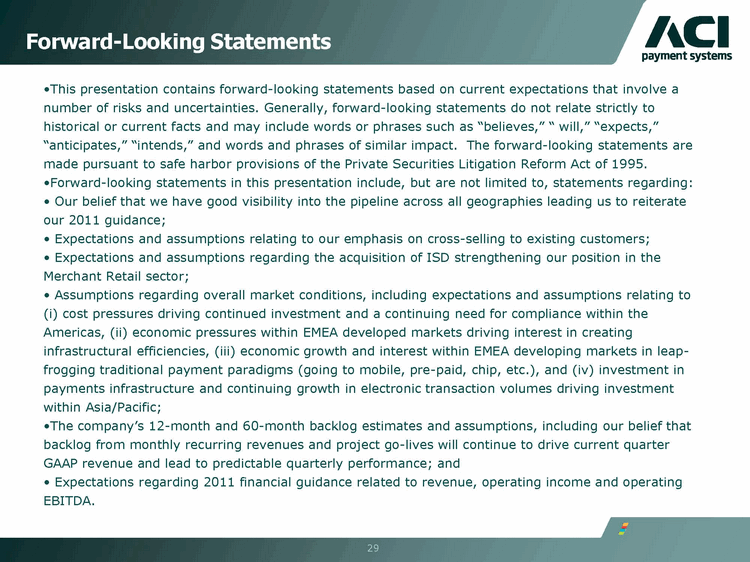
| Forward-Looking Statements This presentation contains forward-looking statements based on current expectations that involve a number of risks and uncertainties. Generally, forward-looking statements do not relate strictly to historical or current facts and may include words or phrases such as "believes," " will," "expects," "anticipates," "intends," and words and phrases of similar impact. The forward-looking statements are made pursuant to safe harbor provisions of the Private Securities Litigation Reform Act of 1995. Forward-looking statements in this presentation include, but are not limited to, statements regarding: • Our belief that we have good visibility into the pipeline across all geographies leading us to reiterate our 2011 guidance; • Expectations and assumptions relating to our emphasis on cross-selling to existing customers; • Expectations and assumptions regarding the acquisition of ISD strengthening our position in the Merchant Retail sector; • Assumptions regarding overall market conditions, including expectations and assumptions relating to (i) cost pressures driving continued investment and a continuing need for compliance within the Americas, (ii) economic pressures within EMEA developed markets driving interest in creating infrastructural efficiencies, (iii) economic growth and interest within EMEA developing markets in leap- frogging traditional payment paradigms (going to mobile, pre-paid, chip, etc.), and (iv) investment in payments infrastructure and continuing growth in electronic transaction volumes driving investment within Asia/Pacific; •The company's 12-month and 60-month backlog estimates and assumptions, including our belief that backlog from monthly recurring revenues and project go-lives will continue to drive current quarter GAAP revenue and lead to predictable quarterly performance; and • Expectations regarding 2011 financial guidance related to revenue, operating income and operating EBITDA. 29 |
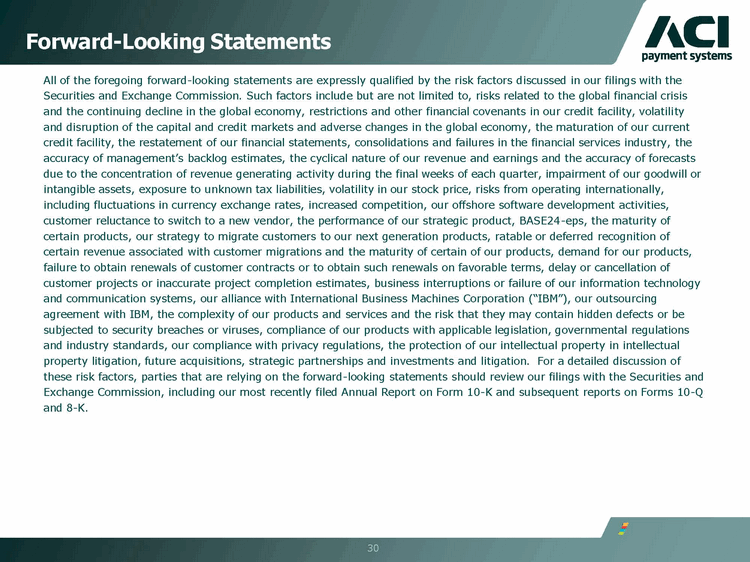
| Forward-Looking Statements All of the foregoing forward-looking statements are expressly qualified by the risk factors discussed in our filings with the Securities and Exchange Commission. Such factors include but are not limited to, risks related to the global financial crisis and the continuing decline in the global economy, restrictions and other financial covenants in our credit facility, volatility and disruption of the capital and credit markets and adverse changes in the global economy, the maturation of our current credit facility, the restatement of our financial statements, consolidations and failures in the financial services industry, the accuracy of management's backlog estimates, the cyclical nature of our revenue and earnings and the accuracy of forecasts due to the concentration of revenue generating activity during the final weeks of each quarter, impairment of our goodwill or intangible assets, exposure to unknown tax liabilities, volatility in our stock price, risks from operating internationally, including fluctuations in currency exchange rates, increased competition, our offshore software development activities, customer reluctance to switch to a new vendor, the performance of our strategic product, BASE24-eps, the maturity of certain products, our strategy to migrate customers to our next generation products, ratable or deferred recognition of certain revenue associated with customer migrations and the maturity of certain of our products, demand for our products, failure to obtain renewals of customer contracts or to obtain such renewals on favorable terms, delay or cancellation of customer projects or inaccurate project completion estimates, business interruptions or failure of our information technology and communication systems, our alliance with International Business Machines Corporation ("IBM"), our outsourcing agreement with IBM, the complexity of our products and services and the risk that they may contain hidden defects or be subjected to security breaches or viruses, compliance of our products with applicable legislation, governmental regulations and industry standards, our compliance with privacy regulations, the protection of our intellectual property in intellectual property litigation, future acquisitions, strategic partnerships and investments and litigation. For a detailed discussion of these risk factors, parties that are relying on the forward-looking statements should review our filings with the Securities and Exchange Commission, including our most recently filed Annual Report on Form 10-K and subsequent reports on Forms 10-Q and 8-K. 30 |
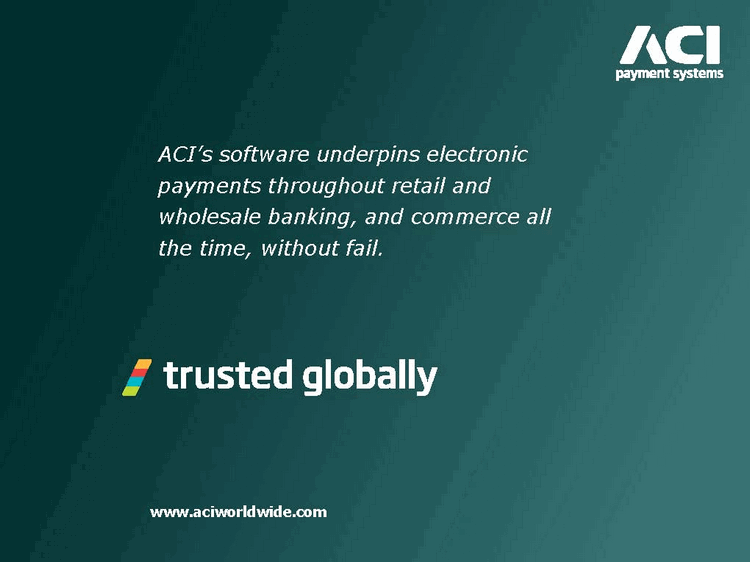
| ACI's software underpins electronic payments throughout retail and wholesale banking, and commerce all the time, without fail. www.aciworldwide.com |
